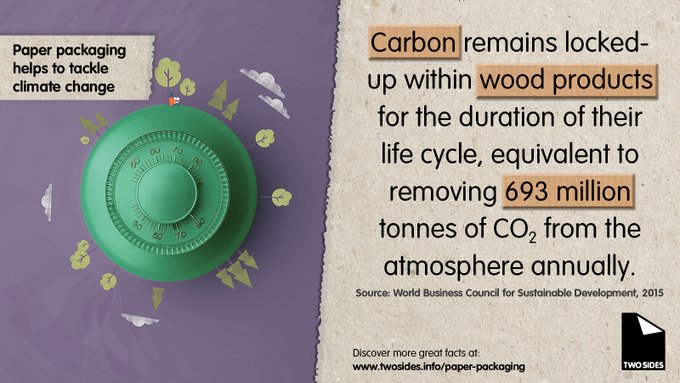
“How green is your mail?” is a question that we sometimes get asked by customers who are thinking about the environmental impact of their communications.
Media messaging around “Save Trees, Save Paper” and “Go Green, Go Paperless” can give the impression that digital communications are more environmentally friendly than print, but is that really the case?
The answer may surprise you!
The Truth Behind The Message
The “Choose e-billing and help save a tree” message is often Green wash; disguising a cost saving campaign behind unfounded environmental claims.*
Many banks, telecom providers, utility companies and even governmental organisations have been found to be using unsubstantiated claims about print and paper’s impact on the environment.
Jonathan Tame from Two Sides; “Not only are these claims in breach of advertising rules, but they are hugely damaging to an industry which has a solid and continually improving environmental record. Far from ‘saving trees’, a healthy market for forest products, such as paper, encourages the long-term growth of forests through sustainable forest management.“*
How Sustainable is Paper?
Paper is one of the few truly sustainable and renewable products as it is produced from wood, a natural and renewable material.
As they grow, trees absorb CO2 from the atmosphere. The carbon absorbed by the tree remains stored (sequestered) in the paper, card, and other products produced from it’s wood throughout their life cycle.
The World Business Council for Sustainable Development figures indicate that carbon locked up within wood products equates to removing 693 million tonnes of CO2 from the atmosphere per year.

European forests (the raw material source for the paper we use) have grown by an area equivalent to over 1,500 football pitches a day, every day, for over 10 years.
The Food and Agriculture Organisation of the United Nations Global Forest Resources Assessment report (2015) shows that European forests have grown by over 44,000 Square kilometres; which is an area larger than Switzerland.
Recycled and Recyleable
European Paper Recycling Council figures show that across Europe we recycle 72% of paper, which is approaching the practical theoretical maximum recycling rate of 78%.**

On average paper in Europe is recycled 3.6 times a year** and 54% of the fibre used in Europe’s paper production industry is from recycling.***
Digital isn’t Necessarily Low Impact
Digital media is widely perceived to be the kindest on the environment, reaching the most amount of people with the lowest impact on the natural world. However, there’s a hidden cost associated with the rapid rise in technology and digital communications.
Recent estimates state that the information and communications technology industry is responsible for 3% of global greenhouse gas emissions and 3.6% of global energy consumption.****
In comparison the pulp, paper and print industries together account for only 1% of global greenhouse gas (GHG) emissions. ****
In 2020, the world will throw away over 50 million tonnes of electronic devices, which equates to around 7kg for every person.
20% of this e-waste will being recycled, with the remaining 80% going to landfill or being incinerated, releasing harmful toxins and heavy metals into the environment.****
Beyond The Hype
The “Go Green, Go Paperless” message ignores the sustainable nature of print on paper, which both comes from a renewable resource and is one of the most recycled and recyclable commodities. It also ignores the environmental impact of the ICT products and services used to generate electronic campaigns (plastics, rare metal extraction, fossil fuel energy generation, waste electronic equipment to landfill, etc..)
In truth, both electronic and paper communications have environmental impacts; whatever form of communication we are using, as responsible marketers we should look for ways to reduce our impact.
Stannp and the Environment
Here at Stannp all of our paper and card stocks are FSC certified and manufactured from sustainable managed forest plantations, with PEFC Chain of Custody certified pulp. They are also fully recyclable and biodegradable.
The Xerox dry toners we use in our printing process are non-toxic, non-hazardous, low emission, and designed to be readily recycled using standard de-inking processes. We also return our used toner cartridges for reuse, and recycle any waste products (paper off-cuts, cardboard containers, waste toner etc.) from our production processes.
If sustainability and environmental performance are important to your business don’t forget to include sustainable, renewable direct mail in your marketing mix.
Not yet a Stannp customer? Simply register for a FREE account and you can get started straight away. Once you’ve registered, our friendly customer service team will get in touch to help you find your way around the Stannp platform.
We hope you found our “How Green Is Your Mail” article interesting. If you have any comments or feedback we would love to hear from you.
If you are interested in finding out more about paper and the environment we highly recommend Two Sides, in particular their information on the Myths and Facts around print and paper production.
For more helpful hints, tips, guides and info find us on Twitter, Facebook and LinkedIn, or feel free to speak to your account manager if you have any questions or need any help.
References
*Two Sides Anti-Greenwash Campaign, Feb 2020






